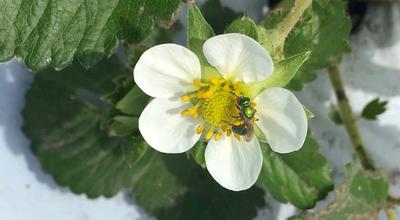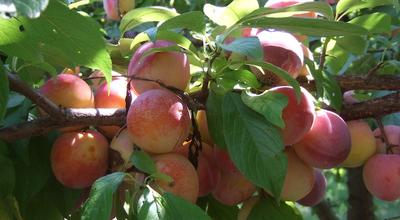When considering the relationship between a cover crop and a specialty crop, vineyards pose a unique challenge which is amplified by the atypical vineyard conditions found across much of Minnesota. This may explain why most, if not all vineyard managers here have not implemented a cover cropping strategy. In our ‘Vineyard Cover Crops’ series, we will look at three potential under-vine cover crop species for Minnesota vineyards:
- Buckwheat
- White Clover
- Perennial Ryegrass
In each article, we will evaluate individual species and address various considerations that determine suitability for Minnesota's unique conditions.
Effect on vineyard temperature and air flow
Minnesota is one of the coldest viticultural regions in the world, which has multiple implications for cover crop selection. To ensure berry ripening and flavor maturity, cover crops with minimal impact on the temperature of the vineyard microclimate should be considered. Early spring and late fall frost events are also a common risk, so cover crops should not impede air drainage from the vineyard.
Effect on water and nutrient availability
Unlike many other crops, grapevines do not require, nor prefer, soils with high levels of available water and nutrients. Various cover crops can have a net positive or negative effect on soil water or nutrient availability. Each of these consequences could be beneficial to the vineyard, depending on the initial field conditions.
Integrated pest management (IPM)
Due to the compounding effects of the state’s climate and precipitation, disease pressure in Minnesota vineyards can be crippling. Cover crops that leave a considerable amount of plant residue around the trunks may be less valuable due to their propensity to host diseases and fungal inoculants; however, mulching of a cover crop’s residue may reduce canopy and cluster disease pressure by contributing to a healthy soil biome.
Erosion control
Erosion control is considered in every cover cropping system, typically it is important to reduce raindrop impact, aid in infiltration, and slow the movement of surface water. For under vine cover crops we are primarily concerned with the latter of these considerations, because the canopy will slow rain drops and intercept a proportion of the rain prior to its falling on the soil or crop below.
Making decisions about cover crops
By evaluating the vineyard site and taking the factors mentioned above into account, cover crop selection can be seen as a balancing act. Each crop will have benefits and detriments associated with its implementation, but proper selection can almost universally improve sites. In the following posts, three common cover crops will be evaluated for their effectiveness in Minnesota vineyards.
Jump to the next article in this series: Vineyard cover crops, part 2: Buckwheat.
Jayden Corliss is a graduating CFANS student contributing these articles for credit as a distance learning substitute for a field course. Jayden is an assistant winemaker at North Shore Winery.
Thanks to Dr. Emily Hoover and Emily Tepe for their contributions to this article.
Banner image: Under vine cover crops trial. Clover. October, 2014. Cornell Cooperative Extension, Suffolk County. Originally published on Innovative Under Trellis Management for Vineyards, Nov. 21, 2014.


